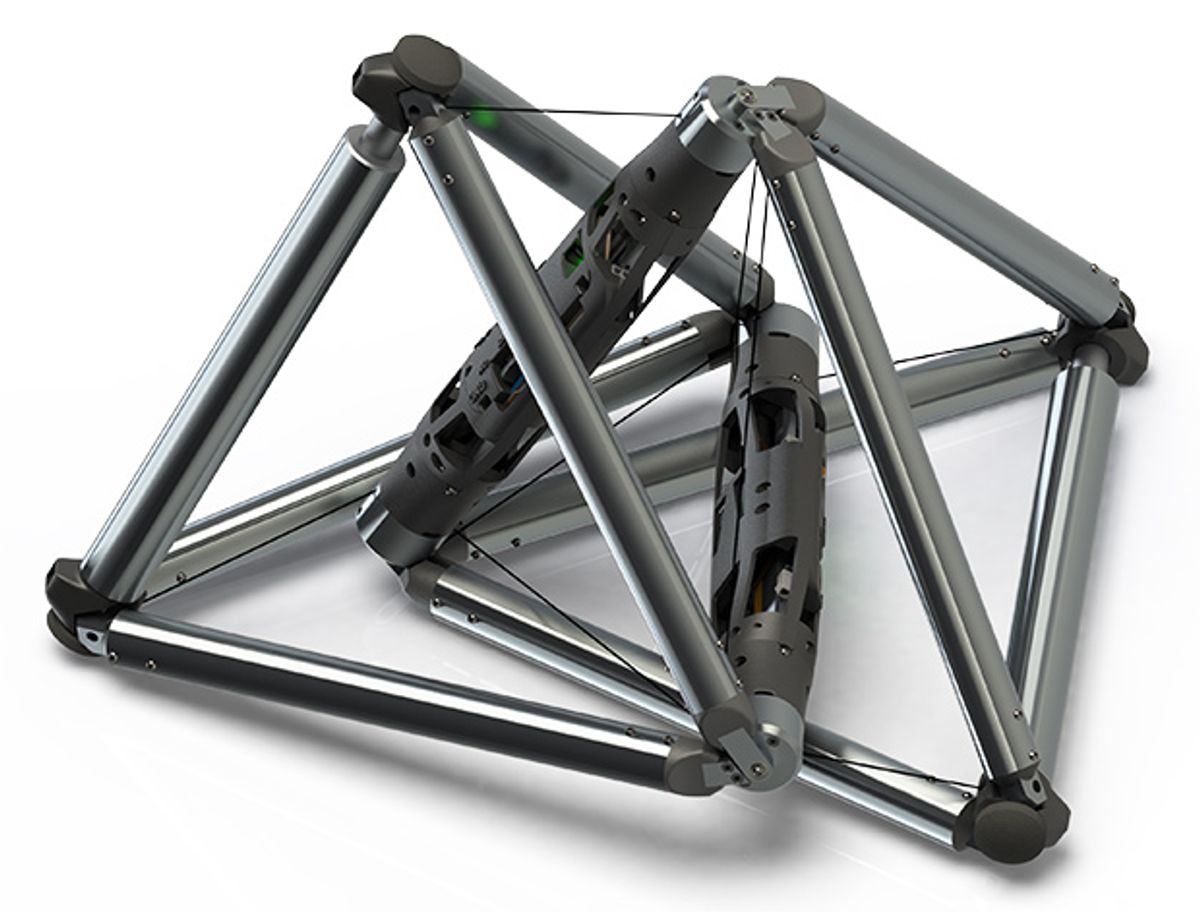According to the World Health Organization, there’s a 30 percent chance that the air you’re breathing right this second is terrible, and the U.S. Environmental Protection Agency estimates that terrible indoor air costs businesses $60 billion annually. This is an enormous amount of money: to put it in perspective, it’s something like half of what I assume the annual budget of IEEE Spectrum is.
You can blame this bad air on your heating and air conditioning system, and the fact that you probably have no idea if it’s ever been cleaned. Getting all up in them ducts by hand is an enormous and very dirty hassle which probably involves partial uninstallation of your ceiling and/or roof, or, you could design a cleverly tetrahedral tensegrity robot to do it for you.
Tensegrity robots were originally developed in the context of space exploration by researchers at NASA Ames; we've written about them a whole bunch. They're combinations of rigid rods and cables that extend and retract to dynamically change the shape and size of the robot that they make up, offering inherent compliance through a versatile and highly mass efficient structure. There are lots of different techniques that tensegrity robots can use for mobility: on more or less horizontal surfaces, they can crawl, roll, and even flopsily climb hills. Jeffrey Friesen, a Ph.D student at the UCSD Robotics Lab, has designed a tensegrity robot made of two tetrahedrons specifically for climbing along, and even straight up, air ducts. It's called DuCTT, for Duct Climbing Tetrahedral Tensegrity:
Here’s a better look at that climbing motion:
The video makes it look a little bit like magic, but there are very thin cables driven by motors in the tubes that control the movement of each tetrahedron, as well as tube sections that can expand and contract. The robot climbs by bracing its top half against the sides of the duct, pulling its bottom half up, and then bracing its bottom half while the top half extends. Repeat the process, and you can get as high as you want, especially with a battery life of six hours. The tubes can also provide a home for whatever sensors and stuff you can cram into them. As for the actual cleaning, there's still a lot of room inside the robot to add (say) a compressed air system, or you could just cover all of the struts in sweepers or something. Whatever. It's the mobility that's the hard part, and this robot looks to have that pretty well handled.
The first prototype, which was presented at ICRA last year, was made of aluminum and 3D printed parts. "We dropped that prototype one time and it pretty much shattered," Friesen says. "That was months of work down the drain." The latest prototype uses aluminum and carbon fiber at all the joints, so it's much more robust to, um, accidents.
Speaking of joints, it turns out that the double tetrahedral design of DuCTT is a lot like the human shoulder joint, which has some interesting potential implications for robot designs:
The shoulder serves as a highly effective six degree of freedom joint in the human arm, and is a key component in many high-precision, compliant, dynamic tasks that are currently difficult for robots to accomplish such as writing, painting, and throwing. While traditional robotic manipulators simulate a spherical joint by placing multiple rotary motors in series, which introduces many complications and challenges, this approach keeps the actuators in parallel as we see in real shoulders, and allows for a compliant motion around an actual center of rotation. Thus if it were possible to duplicate such abilities with similar architecture to what is proposed here, this topology could be exploited as a sub-component of many different limbed robots. It also suggests that further investigation into the benefits of nonregular tetrahedra within the structure needs to be conducted.
[ UCSD ]
Evan Ackerman is a senior editor at IEEE Spectrum. Since 2007, he has written over 6,000 articles on robotics and technology. He has a degree in Martian geology and is excellent at playing bagpipes.




